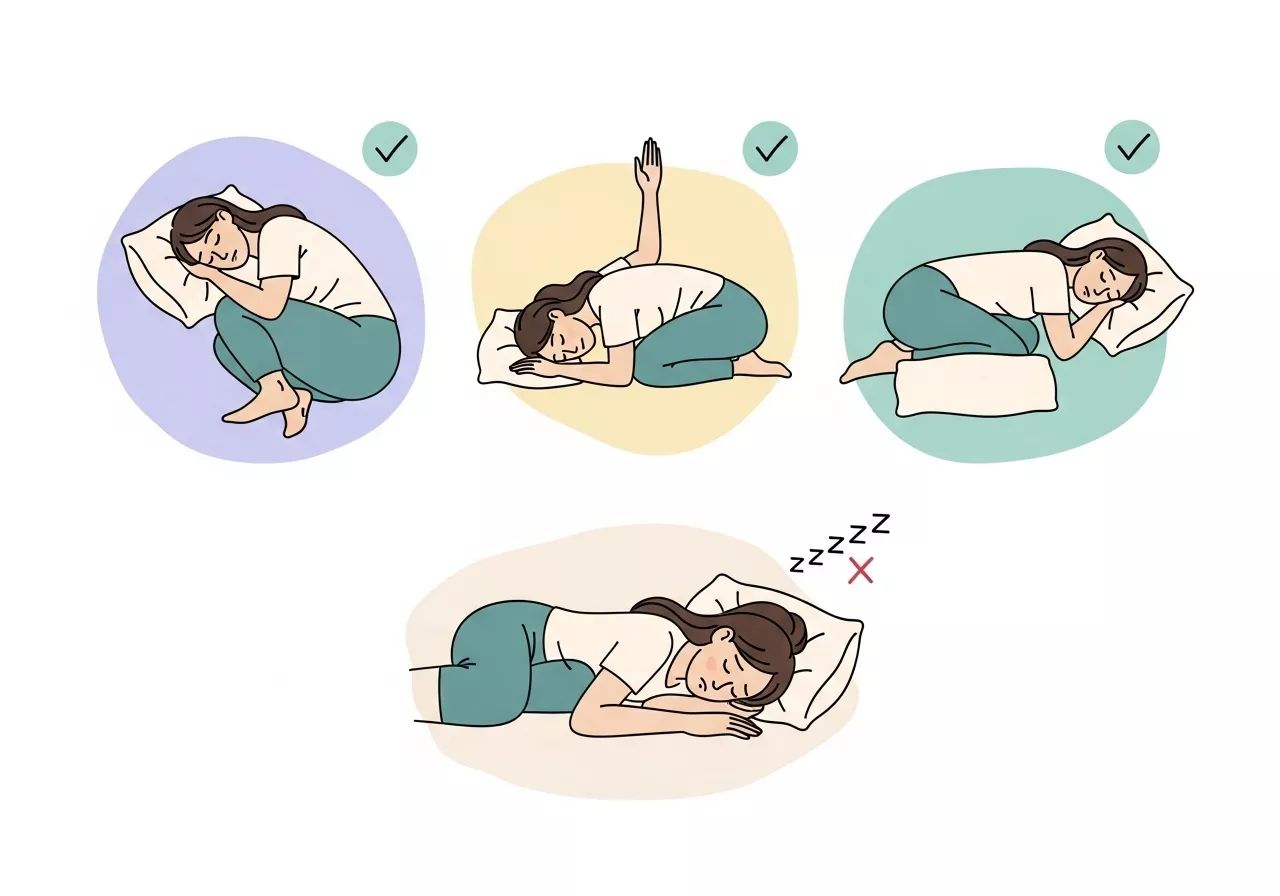Practicing yoga on an empty stomach is widely recommended to enhance the effectiveness of your practice.
This approach involves consuming your last substantial meal approximately four hours before your session, with the option of a light snack up to one hour prior.

Proper nourishment and timing can significantly deepen your yoga experience.
Reasons to Practice Yoga on an Empty Stomach:
1. Optimized Energy Utilization
Practicing yoga on an empty stomach ensures that your body’s energy is fully dedicated to your practice rather than being diverted to digestion.

When you consume food before yoga, your body requires significant energy to break down the meal, leaving less available for movement, focus, and breath control.
This division of resources can impact the quality of your practice, leading to sluggishness or discomfort during challenging poses.
An empty stomach facilitates better energy flow and efficiency, allowing you to engage more deeply with your yoga session.
During physical activities like yoga, your body redirects blood flow to the muscles to support movement and balance.
However, if your digestive system is actively working, a portion of this blood remains in the stomach to aid digestion, which can reduce your endurance and strength during your practice.
Additionally, performing yoga on an empty stomach minimizes the risk of common digestive discomforts, such as bloating, gas, or acid reflux, which can occur when twisting or inverting your body shortly after eating.
This is especially important in poses like Downward Dog, Boat Pose, or any sequence that puts pressure on the abdomen.

Practicing yoga in a fasted state also aligns with the principle of prana, the life force energy that flows freely when the body and mind are unencumbered.
Many yoga traditions advocate for an empty stomach to promote the unblocked movement of energy throughout the body, enhancing the overall benefits of the practice.
Moreover, yoga practiced in the morning while in a natural fasted state—before breakfast—often feels lighter and more energizing.
The body, having rested overnight, is primed to channel its full energy into your movements, improving your focus and the meditative quality of the session.
For those concerned about low energy levels, a small, easily digestible snack, such as a piece of fruit or a few almonds, consumed at least 30 minutes before practice can provide a gentle boost without interfering with digestion.
However, the key is to avoid heavy or greasy foods that require prolonged digestion and energy allocation.
In summary, practicing yoga on an empty stomach allows your body to dedicate its energy to optimizing your movements, breathing, and mental focus, ensuring a more effective and enjoyable session.
2. Enhanced Physical Comfort and Performance
Practicing yoga on an empty stomach greatly enhances your physical comfort and performance, allowing you to move more freely and engage deeply with each pose.

Yoga involves a range of movements, from gentle stretches to more intense positions, many of which place pressure on the abdomen.
A full stomach can restrict your ability to twist, bend, or fold forward, leading to discomfort or even nausea during your session.
On an empty stomach, your body feels lighter and more agile, enabling you to perform poses with greater precision and ease.
For example, deep forward folds like Uttanasana (Standing Forward Bend) or inversions like Sarvangasana (Shoulder Stand) are far more comfortable when your digestive system is not actively processing food.
Twisting poses, such as Ardha Matsyendrasana (Seated Spinal Twist), benefit from the lack of abdominal fullness, as they require your torso to rotate freely without restriction.
A full stomach can also lead to digestive discomfort, such as bloating or gas, especially when engaging in poses that involve core compression or require your body to hold inverted positions.
These discomforts not only disrupt your focus but can also hinder the meditative aspect of your practice, as your mind is drawn to physical unease rather than inner stillness.
From a performance standpoint, practicing on an empty stomach allows you to channel your energy into strength, balance, and flexibility.
Poses that demand physical exertion, such as Plank Pose (Phalakasana) or Warrior II (Virabhadrasana II), become more accessible because your body isn’t expending resources on digestion. Similarly, balance-focused poses like Tree Pose (Vrikshasana) are easier to sustain when your core feels light and engaged.

Moreover, an empty stomach fosters better breath control, or pranayama, which is a cornerstone of yoga.
With no food pressing against your diaphragm, your breathing flows naturally, enabling deeper inhales and more controlled exhales.
This improves your oxygen intake and supports sustained energy throughout your practice.
If you need to practice later in the day, proper meal timing becomes crucial. Consuming your last meal 3–4 hours before yoga ensures that digestion is complete, while a light snack, if needed, about 30 minutes before can provide energy without compromising comfort.
Ultimately, practicing yoga on an empty stomach allows you to enjoy a more seamless, focused, and fulfilling experience, free from the physical limitations that come with a full belly.
3. Accelerated Fat Burning
Practicing yoga on an empty stomach can enhance your body’s ability to burn fat efficiently, making it an effective approach for those aiming to manage their weight or boost their metabolism.
This process aligns with how the body utilizes energy when fasting or when there’s a limited supply of glucose available for immediate use.

When you practice yoga in a fasted state, your body shifts its energy source from glucose (derived from recently consumed food) to stored fat.
This metabolic shift occurs because, in the absence of readily available carbohydrates, the body begins to break down fat reserves for energy.
This is particularly beneficial for individuals who incorporate yoga as part of a weight loss or fitness routine.
Fasting before yoga is especially effective for styles that include dynamic and physically intense sequences, such as Vinyasa, Ashtanga, or Power Yoga.
These vigorous practices increase your heart rate and stimulate calorie burn, enhancing the fat-burning process.
When combined with the fasted state, this results in greater fat oxidation compared to practicing after a meal.

Moreover, certain yoga poses can stimulate your metabolism and digestive organs, further supporting fat loss.
Twisting poses like Revolved Chair Pose (Parivrtta Utkatasana) and Seated Spinal Twist (Ardha Matsyendrasana) promote detoxification and improve digestion, ensuring that your body processes nutrients more efficiently.
Core-focused poses such as Boat Pose (Navasana) and Plank Pose (Phalakasana) strengthen abdominal muscles, contributing to a toned appearance and core stability.
Another advantage of practicing yoga on an empty stomach is improved energy levels and focus, which indirectly supports fat-burning goals.
A full stomach can cause lethargy or a sense of heaviness, reducing the intensity and duration of your practice.
An empty stomach allows you to engage fully in the session, maximizing the physical and mental benefits.
It’s important to note that while yoga in a fasted state promotes fat utilization, it should be approached mindfully.
If you feel lightheaded or fatigued during practice, a small, easily digestible snack—like a handful of nuts or a piece of fruit—can provide a quick energy boost without negating the benefits.
Additionally, staying hydrated before, during, and after your session is essential to support your body’s metabolic processes.
In conclusion, yoga on an empty stomach accelerates fat burning by optimizing the body’s energy usage and enhancing metabolic efficiency.
This, combined with the physical and mental benefits of yoga, makes it a holistic and effective approach to achieving your fitness and wellness goals.
Individual Considerations
While practicing yoga on an empty stomach offers numerous benefits, individual circumstances and health conditions can influence whether this approach is ideal for you.
Every body is unique, and it’s essential to consider your personal needs, lifestyle, and physical health when deciding the best meal timing for your practice.
- Metabolism Variations
People with fast metabolisms may find it challenging to practice yoga on an entirely empty stomach. If you feel lightheaded, weak, or low on energy during your session, your body may require a small snack to sustain activity levels.
Opt for a quick, easily digestible option like a banana, a handful of almonds, or a small piece of whole-grain toast consumed 30–60 minutes before your session. - Health Conditions
Individuals with certain medical conditions, such as hypoglycemia or diabetes, should exercise caution when fasting before yoga. In these cases, blood sugar levels may drop too low during a fasted practice, causing dizziness or fainting.
Similarly, those with digestive disorders like acid reflux or irritable bowel syndrome may experience discomfort practicing on an empty stomach. Consulting a healthcare provider or nutritionist can help determine the safest and most effective eating routine for your yoga practice. - Pregnancy Considerations
Pregnant individuals often require more frequent meals to maintain energy levels and manage nausea. For prenatal yoga sessions, eating a small, nutrient-dense snack—such as yogurt with a bit of fruit or a slice of avocado toast—can help maintain energy and reduce discomfort. However, heavy meals should still be avoided to prevent bloating or indigestion. - Practice Timing
The time of day you practice yoga also plays a role in meal planning. Morning yoga typically aligns well with an empty stomach, as the body is naturally fasted after a night of sleep.
However, if your practice occurs in the afternoon or evening, your last meal should be timed strategically—about 3–4 hours prior to allow for digestion.
If needed, a light snack closer to your practice can provide energy without interfering with movement or comfort. - Intensity and Style of Yoga
The type of yoga you practice can influence your body’s energy needs. For instance, more vigorous styles like Vinyasa, Power Yoga, or Ashtanga require higher energy levels and may warrant a light pre-practice snack for sustained performance.
In contrast, gentler styles like Yin or Restorative Yoga are less physically demanding and can typically be practiced comfortably on an empty stomach. - Listening to Your Body
Above all, tuning into your body’s signals is key. If you experience symptoms such as fatigue, nausea, or difficulty focusing, it may indicate a need for adjustments in your pre-yoga eating routine.
Experimenting with meal timing and types of food can help you find the balance that allows you to practice yoga comfortably and effectively.
Conclusion
Individual factors such as metabolism, health conditions, and the type of yoga you practice should all be considered when deciding whether to practice on an empty stomach.
Paying attention to your body’s unique needs ensures that you can enjoy the benefits of yoga safely and comfortably while tailoring your routine to support your overall well-being.



